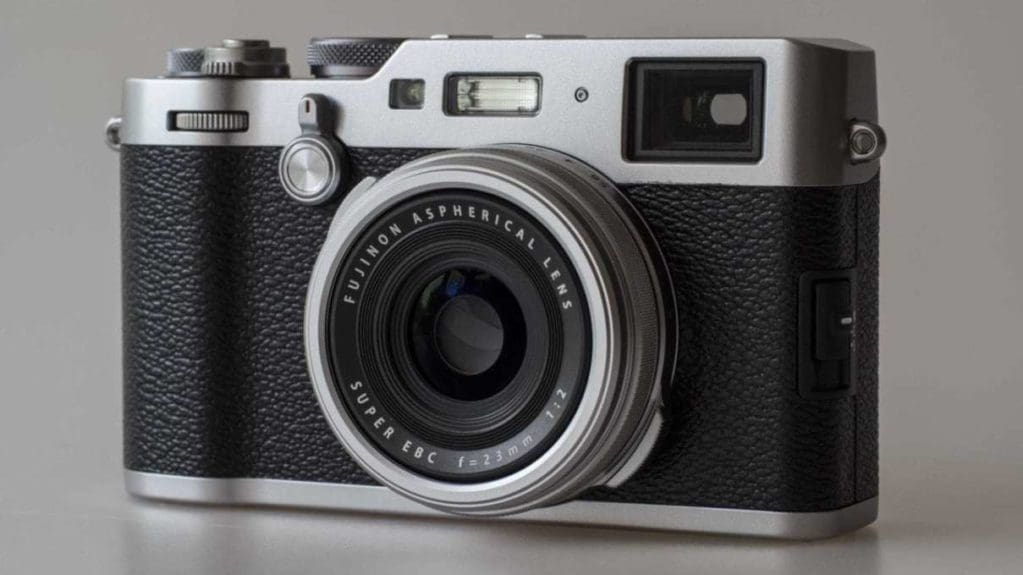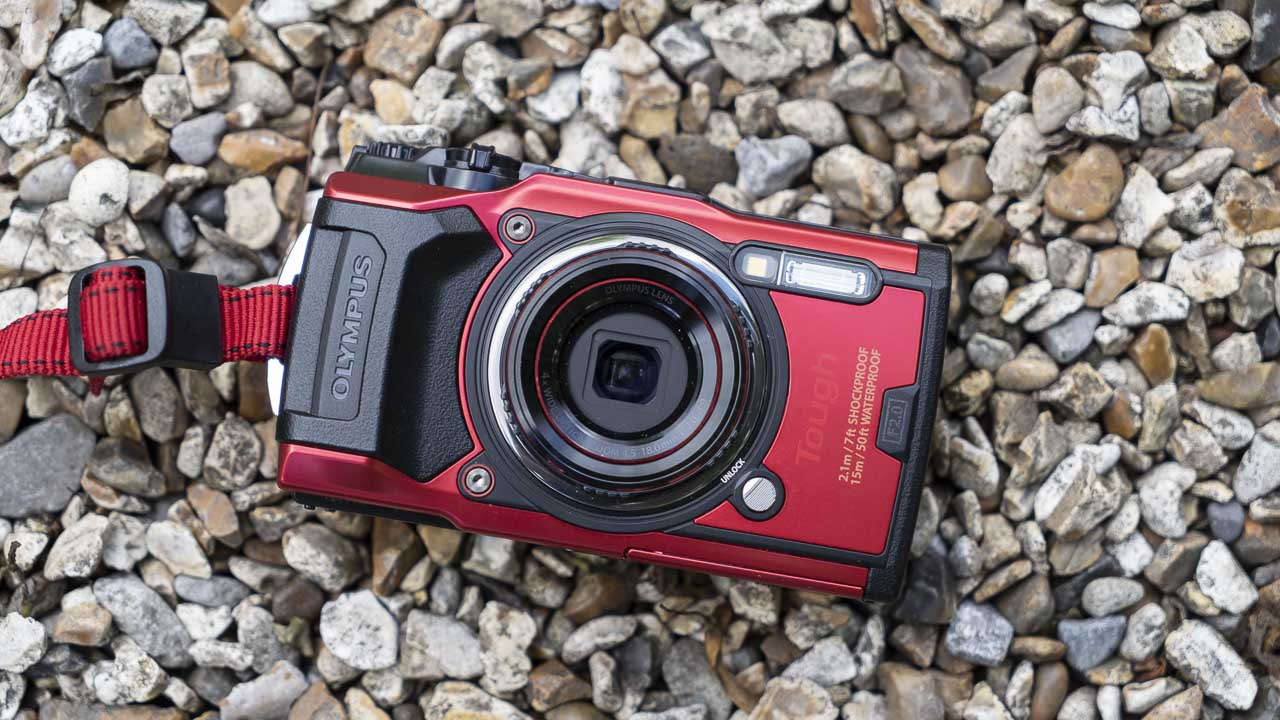Compact camera sales may have taken a hammering as a result of the popularity of smartphones, but in some ways, that’s been a good thing. It means manufacturers have had to try a bit harder to attract our attention. As a result, compact cameras have more enticing features. But which are the best?
Here’s our pick of the best compact cameras you can buy today. For a deeper dive into the many different camera types and features available, check out our range of camera buying guides.
Leica Q2 (Type 4889)

- 47.3Mp full-frame CMOS sensor
- Summilux 28mm f/1.7 ASPH. lens
- Traditional Exposure control
- 3.68Mp electronic viewfinder
- Superb build quality
Okay, so the Leica Q2 is beyond most people’s budget, including mine, but it’s lovely. I mean really lovely. It has the type of build quality that photographers dream of. There’s also a high-resolution electronic viewfinder built-in and the 3-inch 1,040,000-dot screen on the back of the camera is touch-sensitive.
With a shutter speed dial and aperture ring, it really makes you feel in control of exposure. Both of these controls have A settings which means you can shoot in program, aperture priority, shutter priority and manual exposure mode. If you want, however, there’s also a fully automatic setting along with a collection of scenes.
Leica knows a thing or two about lens design and when the optic is matched to the sensor like on the Q2, you get superb quality images.
- 20.1Mp 1-inch type sensor
- 24-200m (equivalent) zoom
- High-resolution pop-up viewfinder
- 24fps continuous shooting
- 4K video
It’s not quite as panic-inducingly expensive as the Leica Q2, but the Sony RX100VI isn’t exactly cheap for a 1-inch sensor compact camera. However, it’s one of the best pocket-sized travel zoom camera around – and it’s cheaper than the very simiilar Sony RX100 VII.
The RX100 VII is the first of Sony’s RX100-series cameras to feature a touchscreen, which is useful for setting the AF point or tripping the shutter quickly. Sadly, you can’t use touch-control for the menu though. But at least the screen tilts, which is handy, particularly if you’re shooting video.
There’s also a high-resolution electronic viewfinder built-in. That’s especially useful in bright, sunny conditions.
Sony’s RX100 cameras have impressed from the outset and the RX100VI is no exception. It produces high-quality images with plenty of detail and nice colours.
Canon PowerShot G5 X Mark II

- 1-inch type 20.1Mp sensor
- 24-120mm (35mm equivalent) f/1.8 – f/2.8 lens
- 0.39-inch type 2,360,000-dot OLED viewfinder
- 3-inch 1,040,000-dot tilting touchscreen
- Sensitivity ISO 125-12,800 expandable to ISO 25,600
Thanks to its pop-up viewfinder the Canon PowerShot G5 X Mark II is smaller than the original PowerShot G5 camera and can fit in a coat pocket. It also has a flip-up touchscreen that can be seen the front for selfies or vlogging and it’s capable of shooting 4K video without any extra cropping being applied.
The results are excellent and the only disappointment is that it doesn’t have a 3.5mm mic port like the PowerShot G7 X Mark III. However, that camera lacks the G5 X II’s viewfinder.
The viewfinder is a major bonus which makes it far easier to compose images in bright sunshine.
- Four Thirds type 21.77Mp sensor
- Multi-aspect ratio sensor design
- Leica DC Vario-Summilux 24-75mm (equivalent) f/1.7-f/2.8 lens
- Traditional exposure controls
- Touchscreen
The original Panasonic Lumix LX100 was one of my favourite compact cameras and the LX100 II is a nice update. It still has the multi-aspect ratio Four Thirds type sensor but it’s been updated to a 21.77million-pixel device that outputs images to a maximum size of 17Mp. There’s also still a switch on the lens to swap between 4:3, 3:2, 1:1 and 16:9 aspect ratios. When you switch between them, the resolution remains high and focal length stays the same.
I have to confess that I’m disappointed that the 3-inch 1,240,000-dot screen doesn’t tilt, but it has fully integrated touch-control. There’s also a 2,764,000-dot electronic viewfinder, so you get a good view of the scene in bright sunlight.
Like the Leica Q, the LX100 II has traditional controls so you can change aperture with the lens ring and adjust shutter speed and exposure compensation with the dedicated dials. There’s also a button to quickly activate the intelligent auto options should you feel the need.
The crowning glory of the LX100 II is its Leica DC Vario-Summilux 24-75mm (equivalent) f/1.7-f/2.8 lens. This high-quality optic ensures crisp details with excellent control of aberrations and distortion.
Fujifilm X100F

- 24.4Mp APS-C (23.6 x 15.6mm) sensor
- Fujinon 23mm f/2.0 (35mm equivalent)
- Hybrid viewfinder: Optical viewfinder and 0.48-inch 2,360,000-dot electronic viewfinder (EVF)
- Hybrid AF system with up to 325 AF points
- 3.0-inch LCD with 1040,000 dots
The Fujifilm X100F has a premium quality feel and delivers first-rate images. There’s also a hybrid viewfinder built-in which means you can switch between an optical or an electronic finder. I find the electronic viewfinder (EVF) a great choice as it allows you to see the impact of camera settings, including the exposure, white balance and Film Simulation mode.
This is another camera with traditional exposure controls and they’re very well implemented. Coupled with the 35mm (equivalent) f/2 lens and pretty snappy AF system (complete with a mini-joystick for setting the AF point), the X100F is a nice choice of camera for reportage, landscape and street photography.
Olympus Tough TG-6

- Waterproof to 15m, dust-, freeze- and crush-proof
- 12Mp sensor
- 25-100mm (equivalent) f/2.0-4.9 lens
- Same processing engine as the Olympus OM-D E-M1 II
- Pro Capture Mode
Sometimes you want to take photographs in harsher environments than the average camera can handle. That’s were a compact camera like the Olympus Tough TG-6 comes in handy. It’s built to survive a drop from 2.1m, being crushed by up to 100kg and frozen down to -10°C and operates at up to 15m below water without an underwater housing. And as it’s dust-proof you don’t need to worry if you or the kids drop it on the beach.
Like the other cameras in this buyers’ guide, the TG-6 can shoot raw files. There’s also a Microscope mode that lets you focus on subjects that are 1cm from the lens.
Add in a top-shooting rate of 20fps, 10fps shooting with a rolling buffer of 5 images in Pro Capture mode and 4K (3840 x 2160) video at 30p or 25p and Full HD (1920×1080) video at upto 120p you have a great compact camera for taking on adventures.


